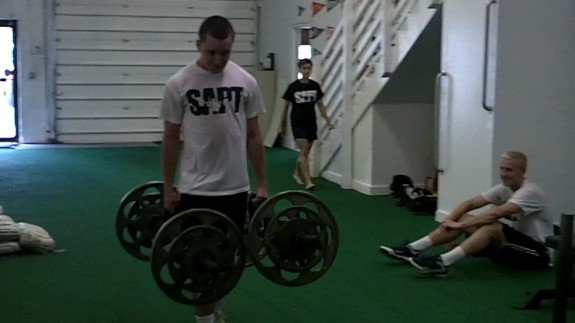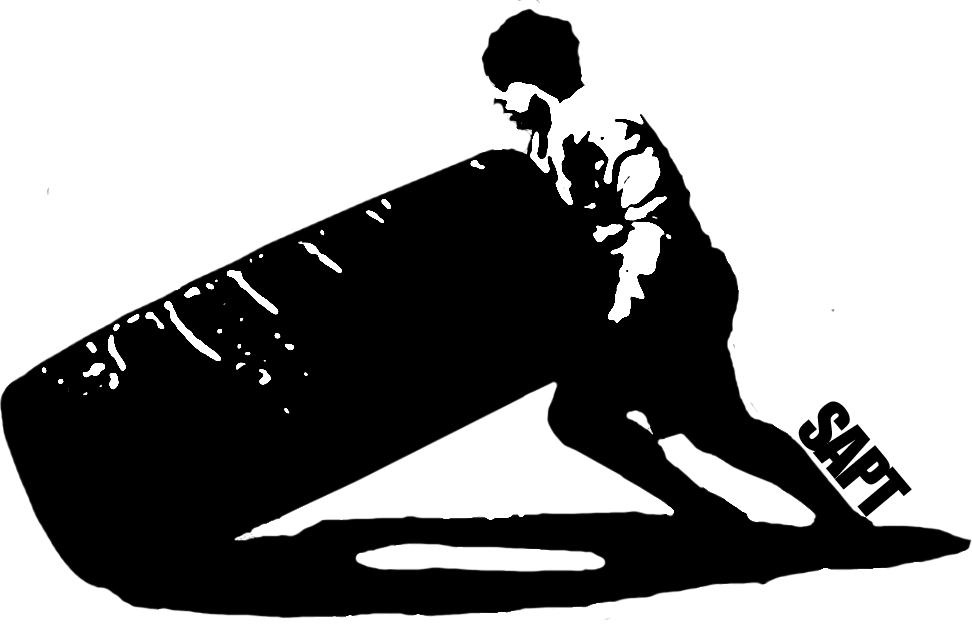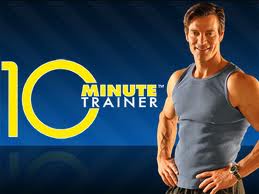This week we're going with one theme: RunFAST. This is the new program we've been developing that we'll officially take the lid off of on Friday. I have to acknowledge, we're offering something totally new, so we're gonna take it slow and start with a post a bit more traditional in terms of the usual SAPTstrength banter. But check the blog every day this week. We've got 5 killer posts lined up.
For the first RunFAST post, one of our interns has written a fantastic post describing in detail the benefits of lifting for ALL TYPES OF RUNNERS (yes, you distance folks can enjoy this, too!).
Why should you listen to this guy who I just admitted is an intern, well, he's a special intern. His name is Gustavo Osorio (or Goose from here on out) and he just graduated from George Mason. Goose was a member of the track team and a stellar decathlete who very recently repeated as CAA champion! Pretty cool, right? This guy knows his stuff. I learned a few things myself and, given that I was his strength coach, that means he really knows some awesome details about high-performance.
I opened up comments again, so please post your thoughts and share with friends. Here we go:
Lifting And Its Benefits For Runners!
“Strength is the foundation for excellence,” this is a mindset I’ve come to respect and adopt for myself after my short time here at SAPT. When you think about it a strong body is a health body, one capable of efficiently moving in any way and letting a person’s athleticism truly shine. Strength is without a doubt the foundation for speed and agility. This concept that may seem foreign to many runners because of all the myths regarding resistance training and running. Many runners and even some running coaches are under the impression that hitting up the weight room once in a while will only result in injury, getting “bulky”, and losing that speed they’ve worked so hard to achieve. When, in reality, a well-structured resistance training program can make the body bulletproof, make your muscles more efficient without bulk, and boost the training effects of your running workouts (aka make you faster).
Myth #1: Lifting (squatting and deadlifting) is bad for your back. Don’t do it!
When performed correctly and with the appropriate assistance work squats and deadlifts can help you build a bulletproof back, glutes, and hamstrings. All three of these muscle groups also happen to be three of the most common sites for sprains and injuries on runners. Coincidence?? I think not! When running you’re lower back acts as a shock absorber, while the glutes and hamstrings are used for force production to propel the body forward. If an individual doesn’t strengthen these muscle groups and continues to constantly hammer them with more running eventually the muscles breakdown from overuse and an injury occurs.
On the other hand, if an individual strengthens these muscle groups they reduce their chances of injury and increase the work load their body can handle. This means they’ll be able to put in more work on the track during practice and, when meet day arrives, fast times will be run!
Fun fact about elite runners, whether it be a sprinter or a distance runner, is that they have some type of year around resistance training program implemented into their training. When you get to the Olympic level and everyone is tenths of seconds away from each other, keeping your body healthy through resistance training makes the difference between being an Olympic medalist and not making the final.
Myth #2: Lifting will make you bulky and slow
A big fear amongst runners is that resistance training will put on too much “useless” muscle for them to carry around. Truth is, a resistance training routine will make you bulky and slow ONLY if you completely stop running and if you have no idea of how to make it sport specific. Just because you’re lifting weights doesn’t mean you’ll turn into the hulk overnight (or ever... let's be real here) but it can make your muscles more efficient at what they do. By training your energy systems through lifting you’re running can be exponentially enhanced. Think of your body as a car and that the energy systems providethree different types of fuel it runs on. These BIG 3 are: the phosphagen system, the anaerobic system, and the aerobic system.
The phosphagen system provide the equivalent of jet fuel for the body. It gives you tons of energy but it burns out super fast! How fast you ask?? Well it gives you enough for 6 to 10 seconds of all out exertion. It provides the energy for the beginning of every race and it is the most dominant energy system during short running event, 60 meters to 100 meters. It is also involved in any sport that requires any sudden bursts of speed and explosion such as basketball, baseball, football, and volleyball. This system is primarily trained through plyometrics and lifts that require high force production at high speeds.
The anaerobic system gives you a mix between jet fuel and regular gas, it still yields a high amount of energy and manages to last a bit longer, between 1 to 3 minutes depending on the intensity of the event. This system is the most dominant for the 400-800 meter distances.It is also involved in sports that require prolonged bouts of speed and some endurance such as boxing, wrestling, lacrosse, and soccer. This is a tricky energy system to train because it requires a mix of power training, muscular strength training, and some muscular endurance training.
The aerobic system gives the body the same effect gas would in a car, it doesn’t let you go blistering fast but it give you a constant stream of energy to keep you going for miles. This is the dominant system in athletes who compete in endurance events such as triathlons, marathons, long distance swimming, and cross country skiing. This energy system can be trained through circuit training and low weight/high rep/low rest lifting.
**WORD OF CAUTION: Train a certain energy system through lifting does not mean you’ll necessarily get faster. When you integrate a lifting program on to a running program correctly the two can complement each other quite nicely. However if all you do is lift aerobically and then expect to go run a marathon you most likely won’t finish.**
Myth #3: Lifting has no positive transfer to running.
Another great benefit of resistance training is the improvement in something called your Rate of Force Development (RFD). [Side note: Kelsey did an amazing job of going into great detail on RFD, if you haven’t read her posts I strongly recommend them! Part 1 and Part 2.] Basically what that means is how fast your muscles can produce a high amount of force. This is beneficial to runners and all athletes because producing higher amounts of force at a faster rate enable you to move faster. Through training this can help optimize your stride length (amount of distance covered per step) and increase your stride frequency (how fast your feet hit the ground) both of which will also make you faster.
This last bit is something most people often neglect, but it makes a world of difference in their running. Aside from improving energy systems and Rate of Force Development lifting can be used to improve running posture. When performed correctly the squat and the deadlift teach people to brace their core and to properly align their back so it’s in the neutral position. A lot of people can go through an entire running career (like myself) without ever realizing that this has a massive positive transfer to running.
The two pictures above demonstrate how the body should be aligned during the deadlift and squat. If you take a side picture of yourself you should be able to draw a straight line from your hips to the base of the head.
Let’s take a look at Tyson Gay coming out of blocks. You can make a straight line from his hips to his head, JUST like a squat or deadlift! Coincidence?? I think not! By keeping his back in a neutral position and bracing his core he is getting the most propulsion out of the power he is putting on the ground. By keeping his core rigid (not tense) all the force being placed on the ground is not lost or being absorbed by an arched or hunched back. Same thing would happen if you lifted with a rounded back, the spine would absorb a lot of the force going up (deadlift) or down (squat) instead of letting your legs and glutes do the work.
Now take a look on the right at Carl Lewis, he is in the Maximum Velocity phase of the 100 meters which means he is trying to maintain his top speed for as long as possible. The line from the hips to the head is still there which means he is getting the most out of the force production. But that’s not all! Notice how his hip are neutral and not anteriorly rotated, his butt isn’t sticking out. This allows him to get a higher knee drive, cover more ground with his stride, and keeps him from kicking his leg too far back. A great way to teach this to people is the finishing position in the squat and the deadlift often referred to as the “lock out”. And like the squat/deadlift lock out phase if his hips were too posteriorly rotated, too far forward, he would put his back out of alignment and sacrifice kick back range of motion.




